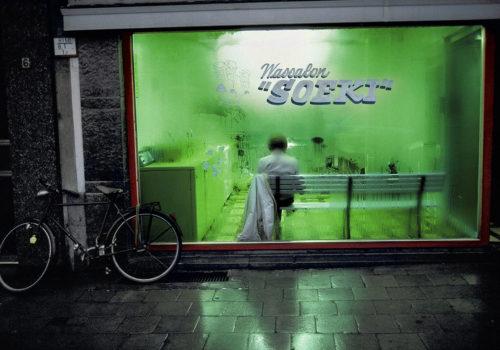The Galerie Magnum presents iconic color photographs of the 20th century. Early Color is the gallery’s first group exhibition to date, celebrating the work of eight photographers: Werner Bischof, Ernst Haas, Alex Webb, Harry Gruyaert, Constantine Manos, Miguel Rio Branco, Bruno Barbey, and Gueorgui Pinkhassov.
“Fashion, food, travel, cars, the ability to fly – everything had taken on a new shine. The dark times were over,” Ernst Haas wrote of his transition from black and white to color photography in the early 1950s. he would be able to capture all the new colors in his surroundings?”
While exploring color as a new photographic medium was encouraged by several photographers at Magnum, including Robert Capa, many others were unconvinced. Photographers who chose to work in color often went against the grain, their work being labeled “commercial” or “technically inferior”. Henri Cartier-Bresson, who was one of the founders of Magnum, destroyed a large number of his negatives and color slides, taxing the medium as “indigestible”.
For some, working in color was not an obstacle, but rather a prerequisite for artistic expression. In Pinkhassov’s first book of photographs, Sightwalk, the streets of Tokyo are brought to life by vibrant colors, reflections and shadows – transcending the everyday into the extraordinary. In Gruyaert’s Made in Belgium, the low light, grey, blue and green hues of the locations contrast with the vivid colors of the country’s rapid Americanization, capturing the very essence of the artist’s conflicted feelings at the time about his native country.
As described by Haas, there was, for most of these photographers, a sharp transition from black and white to color. Thus, it was only after traveling to the United States that Constantine Manos turned to color, specifically Kodachrome, to document the country — a radical departure from his famous Greek Portfolio, captured entirely in black and white. For Bruno Barbey, color became obvious while working in Brazil in 1966, the year he joined Magnum. He then proved his commitment to color with landmark works such as My Morocco, which decades later continue to immerse us in the streets of his native country. Similarly, Alex Webb turned to color several years after his first trips to Haiti and Mexico in the 1970s, finding black and white too restrictive to capture the intensity and emotional vitality of these cultures. He never looked back.
For Werner Bischof, with whom this journey through 20th century color photography begins, color was an experiment he initiated in 1939 with a Devin Tricolor camera. These color essays remained hidden in his black and white archives until their discovery and their revelation to the world by his estate (Tania Kuhn & Marco Bischof), almost 70 years after his death.
Bringing together eight distinct – but all innovative – perspectives, the exhibition also pays homage to the traditional processes of color photography of this era. Among the forty works exhibited, a large number of dye transfers and vintage cibachromes, from the Magnum archives, are therefore presented.
Samantha McCoy, Gallery Director, explains: “Color isn’t often thought of when you think of Magnum’s early days, yet several of the agency’s photographers were instrumental in the dawn of color photography. As the medium becomes increasingly integrated into the art world, we believe it is time to revisit these pivotal years and celebrate the art that emerged from them.”
Early Color
from September 1 to October 7, 2023
Galerie Magnum
68 rue Léon Frot
Paris 75011
www.magnumphotos.com
















